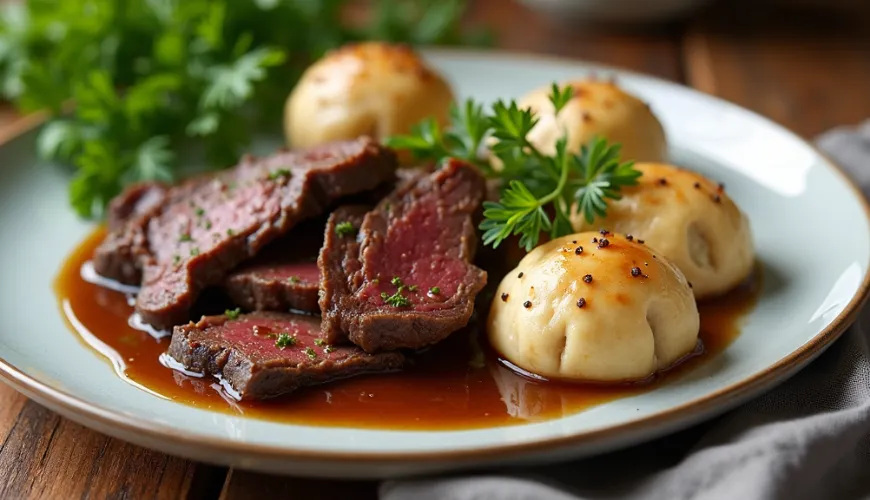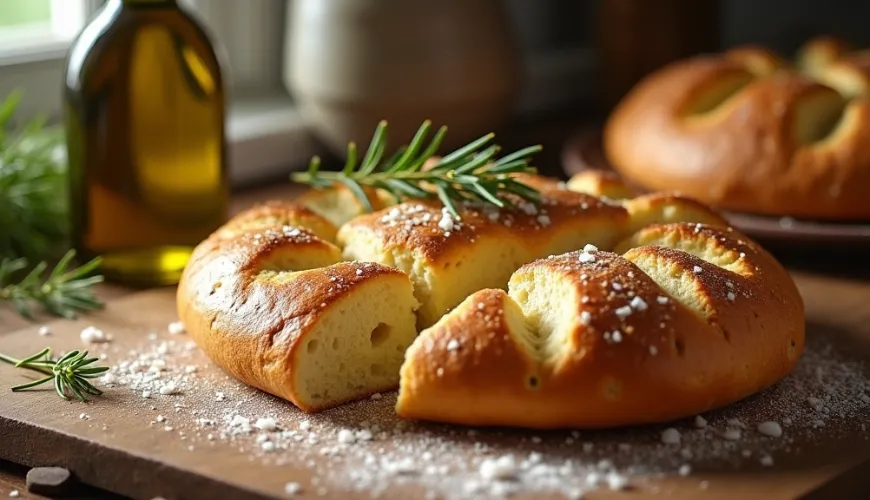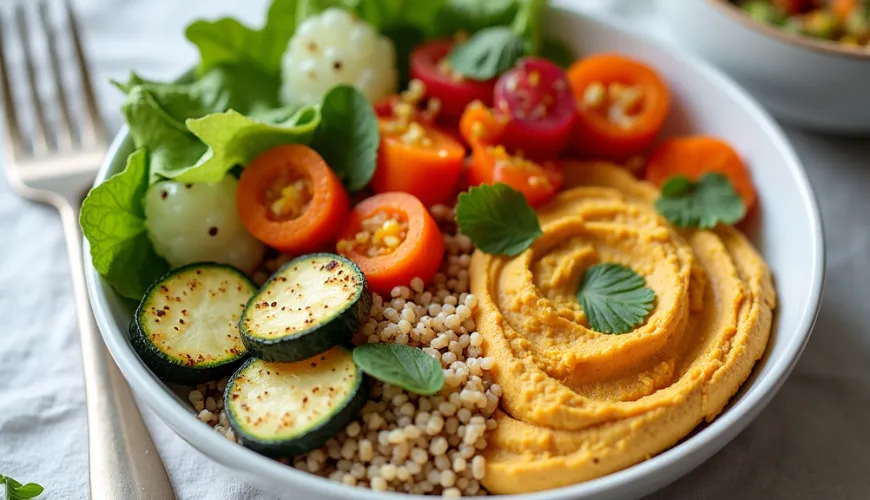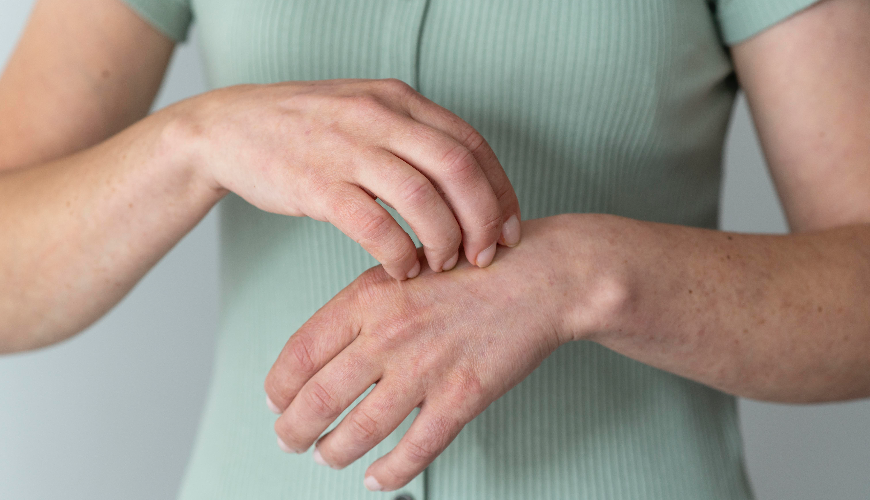
Discover the secrets of perfect focaccia with our simple recipe

Focaccia - The Aroma of Italy That Fills Every Kitchen
Few dishes can evoke the atmosphere of a Mediterranean afternoon on an ordinary day like freshly baked Italian focaccia. This fluffy, aromatic delight with a crispy crust and juicy interior is a classic that you'll fall in love with at the first bite. And the best part? Making focaccia is easier than it seems, and with a bit of patience, its magic can unfold in your kitchen too.
As more people turn to home baking, searching for the best focaccia recipe becomes almost a small art form. Everyone has their version – some add olives, others fresh rosemary, some prefer onions or sun-dried tomatoes. But the foundation remains the dough, which should be light yet hearty, correctly moist yet fluffy.
What Makes Focaccia Focaccia?
At first glance, focaccia might seem like "something between pizza and bread," but that would be a bit of an understatement. It's more than just a side dish. In Italy, it's often served on its own – as an appetizer with olive oil, as a school snack, or as a base for a luxurious sandwich.
What makes focaccia so special is its texture. The surface is gently crispy, often drizzled with quality olive oil, sprinkled with herbs and coarse salt, while the inside remains soft and fluffy. The secret lies in long fermentation and high-quality ingredients. And these deserve our first attention.
Essential Ingredients That Make a Difference
When searching for the best focaccia recipe, it's worth paying attention not only to the procedure but also to the composition. At first glance, it looks simple – flour, water, yeast, olive oil, salt. But the difference in the quality of these ingredients becomes apparent at the first taste.
When you start making homemade focaccia, the main ingredient you begin with is flour – ideally, type 00 wheat flour, which has a finer structure, but if you don't have it at home, you can easily use regular flour from the supermarket. For a bit of experimentation and a finer texture, you can add a pinch of semolina, which gives the dough a pleasant moisture.
Regarding fermentation, it's up to you whether you opt for fresh or dried yeast – both options work, but fresh yeast gives the dough a slightly different, "livelier" taste. A key role is played by extra virgin olive oil, which not only adds a strong aroma and flavor to the focaccia but also helps create a beautifully moist crumb and a slightly crispy crust – it's definitely worth using the best you have. And finally, the seasoning – sea salt, ideally coarser crystals that crunch nicely on the surface, together with fresh rosemary, which is the somewhat unofficial king of focaccia, create a simple yet absolutely brilliant combination that you'll love.
Traditional Italian Focaccia Recipe
If you're looking for a proven focaccia recipe that even a beginner can handle, the following version is an ideal starting point. The key is patience. Give the dough time, and it will reward you with its flavor.
Ingredients:
- 500 g all-purpose flour
- 350 ml lukewarm water
- 25 g fresh yeast (or 7 g dried)
- 10 g salt
- 2 tablespoons extra virgin olive oil (for the dough)
- 2 tablespoons olive oil (for drizzling)
- Fresh rosemary
- Coarse sea salt
Instructions:
- In a bowl, mix water with yeast and let it sit for a moment to activate.
- Add flour, salt, and olive oil. Mix until a sticky dough forms.
- Knead (by hand or with a mixer using a hook attachment) for about 10 minutes until the dough is smooth and elastic.
- Cover with cling film or a cloth and let it rise for at least an hour, ideally two.
- Transfer the dough to a tray greased with olive oil and spread it evenly with your fingers. Let it rise again for 30–45 minutes.
- Make dimples in the dough with your fingers, drizzle with olive oil, sprinkle with rosemary and sea salt.
- Bake in a preheated oven at 220 °C for about 20–25 minutes until the focaccia is golden.
Variations Worth Trying
Once you master the basic recipe, a world of tasty possibilities opens up – focaccia is like a canvas on which you can paint whatever you want. Whether you sprinkle it with olives and sun-dried tomatoes, add onions with thyme, or go sweet with grapes and honey (as they do in Tuscany), each time it can be a completely different but equally great treat.
Italians also enjoy focaccia as a quick lunch – they cut it in half and fill it with mozzarella, Parma ham, or grilled vegetables. In Liguria, they dip it in coffee – which might sound strange, but it's definitely worth trying.
The Story of a Focaccia
At a small garden party in southern Bohemia, the scent of rosemary and freshly baked bread filled the air on a summer evening. The hostess, who fell in love with home baking during the lockdown, served focaccia still warm, straight from the oven. No one asked for meat. The focaccia disappeared from the table in minutes. "This tastes like a holiday in Italy," one guest remarked and asked for the recipe. And that's exactly what it's about – simple, natural flavors that bring people together more than any complex dish.
Focaccia and a Sustainable Lifestyle
Home baking is not just about taste and aroma. It's also a step towards a more sustainable way of life. When we bake at home, we have full control over the ingredients. We can choose flour from organic farming, support local olive oil producers, or grow herbs on the balcony. Focaccia also makes great use of leftover ingredients – a few olives, a piece of vegetable, or herbs that would otherwise end up in the trash.
According to the Food Waste Atlas, up to a third of the food produced worldwide is wasted. Home baking, like focaccia, can be a small (but tasty) contribution to changing this trend. And if there's any left? Focaccia tastes great the next day too – just warm it slightly or toast it in a pan.
Why You'll Love Focaccia
Focaccia is not just a dish; it's a ritual. From kneading the dough to the first crunch of the crust. It brings joy to the kitchen, fragrance to the home, and comfort to the table. Whether you're looking for a recipe for classic Italian focaccia or want to try something new, one thing is certain – focaccia will quickly become a staple in your baking repertoire.
And as one Italian baker said: "The best focaccia is the one you eat while it's still warm." Because the taste of Italy begins right here – in your oven.

